 |
by brian wang on (#36396)
D-Wave system shows quantum computers can learn to detect particle signatures in mountains of data, but doesn’t outpace conventional methods — yet. A team has shown that a quantum circuit can learn...
|
 NextBigFuture.com
NextBigFuture.com
| Link | https://www.nextbigfuture.com/ |
| Feed | http://feeds.feedburner.com/blogspot/advancednano |
| Updated | 2025-12-22 01:33 |
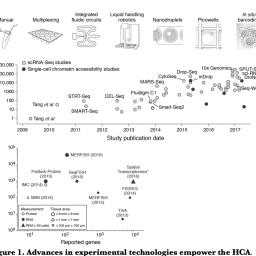 |
by brian wang on (#36398)
The Human Cell Atlas (HCA) Consortium has released a blueprint for the international initiative’s efforts to create a comprehensive reference map of all human cells, a project that will form the basis for a deeper understanding of human health and for diagnosing, monitoring, and treating disease. The consortium today also announced the impending release of gene expression profiles from the first one million immune cells collected under the HCA, toward an initial milestone of collecting at least 30 million cells representing several tissues and organs for the atlas’ first draft. These data, to be posted on an online repository by
|
 |
by brian wang on (#3639A)
Clearing old zombie cells in mice has been shown to restore fitness, fur density and kidney function. It has also improved lung disease and even mended damaged cartilage. And in a 2016 study, it...
|
 |
by brian wang on (#3639C)
New DNA base editing platform holds potential for reversing the most common class of disease-associated DNA point mutations. Scientists at Harvard University and the Broad Institute of MIT and...
|
 |
by brian wang on (#3639E)
New Broad Institute ‘REPAIR’ system edits RNA, rather than DNA; has potential to treat diseases without permanently affecting the genome. The Broad Institute and MIT scientists who first harnessed...
|
 |
by brian wang on (#3639G)
Rice grown on a commercial scale in diluted seawater has, for the first time, made it into the rice bowls of ordinary Chinese people after a breakthrough in food production following more than four...
|
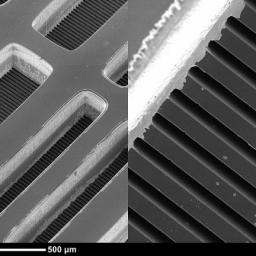 |
by brian wang on (#3639J)
Researchers have developed a new type of cooling system for high-performance radars and supercomputers that circulates a liquid coolant directly into electronic chips through an intricate series of...
|
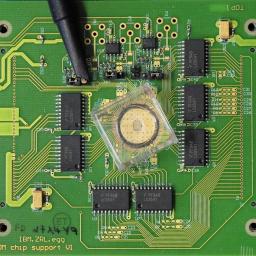 |
by brian wang on (#3639M)
“In-memory computing†or “computational memory†is an emerging concept that uses the physical properties of memory devices for both storing and processing information. This is counter to current von...
|
 |
by brian wang on (#3608J)
Engineers at UBC have developed a type of seismic-resistant concrete that can withstand earthquakes with magnitudes as high as 9.1, like the earthquake that struck Tohoku, Japan in 2011. The material...
|
 |
by brian wang on (#3606W)
Our rapidly evolving energy future – packed with electric vehicles, massive energy storage solutions and nanotechnology – requires more tech-grade graphite than it does lithium and...
|
 |
by brian wang on (#36000)
Saudi Arabia will build a megacity called “NEOM,†will operate independently from the “existing governmental framework†with investors consulted at every step during development. The project will be...
|
 |
by brian wang on (#35ZW4)
China’s Air Force released on its weibo social media account two pictures, which show four J-20 stealth fighter jets flying in formation. As of 2017, it is reported that control system, stealth...
|
 |
by brian wang on (#35YB0)
See-through solar materials that can be applied to windows represent a massive source of untapped energy and could harvest as much power as bigger, bulkier rooftop solar units, scientists report...
|
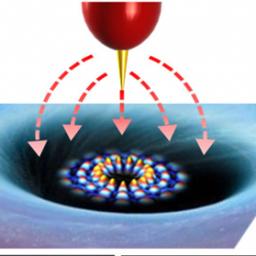 |
by brian wang on (#35XKP)
Scientists at Rutgers University-New Brunswick have learned how to tame the unruly electrons in graphene, paving the way for the ultra-fast transport of electrons with low loss of energy in novel...
|
 |
by brian wang on (#35XKR)
The total current population of high income countries (per World Bank definition) is 1.22 billion. A high-income economy is defined by the World Bank as a country with a gross national income per...
|
 |
by brian wang on (#35XJB)
Spacex has been awarded a $40,766,512 modification (P00007) for the development of the Raptor rocket propulsion system prototype for the Evolved Expendable Launch Vehicle program. Work will be...
|
 |
by brian wang on (#35XGG)
A Northwestern University and MIT study of automation and unemployment risks suggests that small cities will be less resilient than large cities in weathering the impacts of automation. Cities with fewer than 100,000 inhabitants will experience more disruption. Smaller cities have proportional more jobs that are routine clerical work, such as cashier and food service jobs, which are more susceptible. The city has proven to be the most successful form of human agglomeration and provides wide employment opportunities for its dwellers. As advances in robotics and artificial intelligence revive concerns about the impact of automation on jobs, a question looms:
|
 |
by brian wang on (#35XGJ)
5,000 firefighters remain on the frontlines of 10 active Northern California wildfires, many of which are projected to be fully contained within the next few days. Firefighters continue to extinguish...
|
 |
by brian wang on (#35WYQ)
The US Department of Energy (DOE) will be providing $20 million of funding for projects to identify and develop innovative technologies for lower cost and safer advanced nuclear reactors as part of...
|
 |
by brian wang on (#35WX9)
Small RNA molecules originally developed as a tool to study gene function trigger a mechanism hidden in every cell that forces the cell to commit suicide, reports a new Northwestern Medicine study,...
|
 |
by brian wang on (#35WXB)
China should become a high income country by the World Bank definition by about 2023. A high-income economy is defined by the World Bank as a country with a gross national income per capita US$12,236...
|
 |
by brian wang on (#35WP9)
IsureMyTesla is a comprehensive insurance plan developed in cooperation with Liberty Mutual Insurance Company. Designed for Tesla cars, InsureMyTesla enhances the customer experience with the following benefits: New Car ReplacementTM – Allows for a brand new car within the first year in case of a total loss1 Rate guaranteed for one year Genuine Replacement Parts Optional 24-Hour Roadside Assistance beyond the Tesla Warranty Optional Rental Car Reimbursement to pay your rental costs for as long as it takes to fix your Tesla Claims Valet ServiceTM to drop off a rental car at the scene or schedule a swap at an
|
 |
by brian wang on (#35WPB)
After two years of research on Ground X-Vehicle Technologies, Honeywell brings “out-the-window views†and enhanced awareness to closed-cockpit environments. Honeywell has successfully...
|
 |
by brian wang on (#35WM6)
Intel acquired several Artificial Intelligence companies including Saffron Technologies. Saffron was acquired in October 2015. Saffron Technologies develops cognitive computing systems that use...
|
 |
by brian wang on (#35WM8)
Marcus Weiberger at Defense One reports that the US Air Force is preparing to put nuclear-armed B52 bombers back on 24-hour ready alert, a status not seen since the Cold War ended in 1991. Gen. David...
|
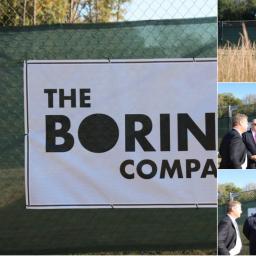 |
by brian wang on (#35V9Z)
In July, 2017 Elon Musk said he was verbally approved to build a New York to DC Hyperloop. Maryland Governor Larry Hogan has tweeted and stated his support for the Boring Company and the Hyperloop...
|
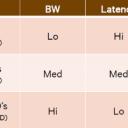 |
by brian wang on (#35TGB)
MonolithIC 3D offers multiple paths to silicon-based Monolithic 3D-ICs using building blocks well-known to the semiconductor industry. Qualcomm will be using Monolithic 3d for their smartphone chips....
|
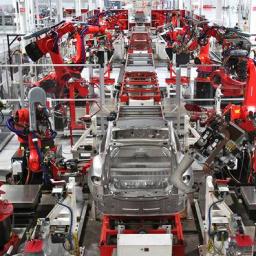 |
by brian wang on (#35TDA)
Tesla has a preliminary deal with the Shanghai municipal government that will give Tesla ownership of a new Tesla factory in Shanghai’s free trade zone. The preliminary deal still offers Tesla...
|
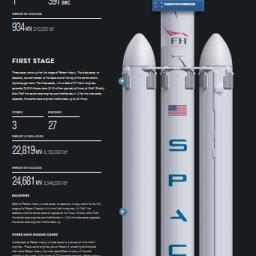 |
by brian wang on (#35TBG)
The most powerful rocket this generation has ever seen, SpaceX’s new Falcon Heavy rocket, launches no earlier than this November, 2017. Kennedy Space Center’s historic launch pad 39A has not...
|
by brian wang on (#35T73)
Typical A.I. specialists, including both Ph.D.s fresh out of school and people with less education and just a few years of experience, can be paid from $300,000 to $500,000 a year or more in salary...
by brian wang on (#35SR6)
Mary Lou Jepson discussed her work to make wearable MRI at ApplySci’s Wearable Tech + Digital Health + Neurotech conference at the MIT Media Lab on September 19, 2017. LCD pixels are getting...
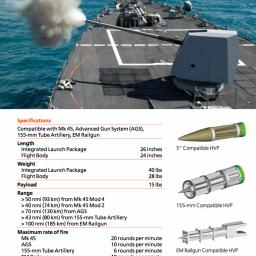 |
by brian wang on (#35SR7)
Navy hypervelocity projectile tests from Navy ships will start soon. The Hyper Velocity Projectile (HVP) is a next-generation, common, low drag, guided projectile capable of executing multiple...
|
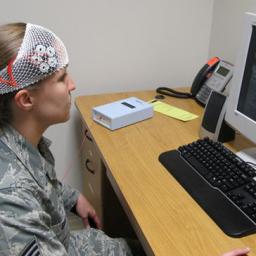 |
by brian wang on (#35SPY)
HRL Laboratories, LLC, researchers have determined how non-invasive transcranial direct current stimulation (tDCS) could increase performance of associative learning. The researchers found that when...
|
 |
by brian wang on (#35SH7)
Shinzo Abe’s Liberal Democratic Party-led (LDP) coalition won a combined 312 seats, keeping its two-thirds “super majority†in the 465-member lower house. Shinzo Abe will almost certainly secure a...
|
 |
by brian wang on (#35SH9)
The old mission of Calico Labs is to “devise interventions that enable people to lead longer and healthier lives.†The new mission is “to harness advanced technologies to increase our...
|
 |
by brian wang on (#35RBK)
Joule Journal – Air-Breathing Aqueous Sulfur Flow Battery for Ultralow-Cost Long-Duration Electrical Storage •Chemical cost analyzed for 40 rechargeable couples developed over the past 60 years...
|
 |
by brian wang on (#35QY2)
Cities already have tolls and charges for a lot of services (parking and roads, licenses) in a city but Google is far more efficient at generating money from targeting ads and mobile ads. Volume, a...
|
 |
by brian wang on (#35QY4)
The US Navy is considering increasing maintaining a 2 Virginia class attack submarine build rate along with a production of one Columbia SSBN sub per year. Adding 7 more Virginia class submarines will add about $18 billion in spending over the next 13 years. The proponents argue that they will get 7 for the price of 6 as they will save about the price of one submarine in production efficiency. The Navy has assigned only a “43% confidence interval†that it will keep costs at or below the $100.2 billion (2017 constant dollars) research acquisition cost for the Columbia SSBN
|
 |
by brian wang on (#35QSG)
The moon has many hundreds of large lava tube caves. The Lunar Reconnaissance Orbiter has now imaged over 200 pits that show the signature of being skylights into subsurface voids or caverns, ranging...
|
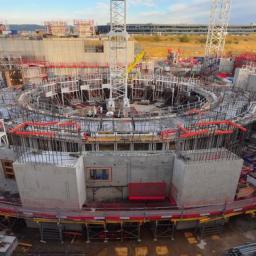 |
by brian wang on (#35Q9E)
ITER is a multi-decade PHD and engineering make work project with the cover story of trying to solve nuclear fusion power generation. Ghostbuster Dr. Raymond Stantz: Personally, I liked the...
|
 |
by brian wang on (#35Q84)
Under the current California high speed rail plan, they wants to begin the 240-mile starter system in San Jose and end in an almond orchard south of Wasco. The state estimates the system would begin...
|
 |
by brian wang on (#35PN2)
Since Hurricane Maria made landfall in Puerto Rico, causing significant damage to the connectivity infrastructure, Google Loon have been working hard to see if it was possible to bring some basic...
|
 |
by brian wang on (#35PN4)
Tesla has all electric service Van based on the Model S and Model X vehicles and technology. In California, Tesla operates about 100 trucks and they are apparently aiming to have hundreds of service...
|
 |
by brian wang on (#35PN6)
Virgin Galactic Vice President Mike Moses told a commercial space conference in Las Cruces, New Mexico, that much progress has been made on flight tests and that supersonic speed is expected soon....
|
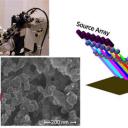 |
by brian wang on (#35PJV)
A team including scientists at the National Institute of Standards and Technology (NIST) may have overcome a significant hurdle to manufacturing hydrogen fuel cells by creating a way to check whether...
|
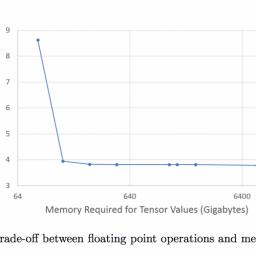 |
by brian wang on (#35NH1)
IBM now has a functional 56-qubit quantum computer simulated in a classical supercomputer. IBM simulated 56 qubits with only 4.5 terabytes. It was previously believed that current supercomputers...
|
by brian wang on (#35NFA)
When a firefighter, first responder or soldier operates a small, lightweight flight vehicle inside a building, in urban canyons, underground or under the forest canopy, the GPS-denied environment...
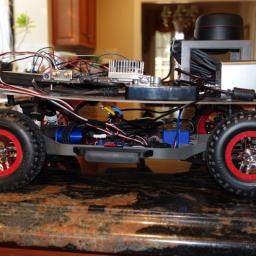 |
by brian wang on (#35NFB)
Thirty Los Altos high school students are building a 1:10 scale model of a self-driving car that will be able to navigate autonomously around their school. Their goal is to learn about and experiment...
|
by brian wang on (#35NBH)
Startup AdaSky is creating a far infrared thermal camera called Viper for self driving cars. Viper is a breakthrough, complete-sensing solution to enable 24/7 driving, combining a far infrared...
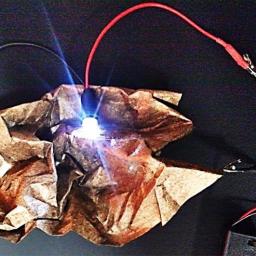 |
by brian wang on (#35NBJ)
Using a simple layer-by-layer coating technique, researchers from the U.S. and Korea have developed a paper-based flexible supercapacitor that could be used to help power wearable devices. The device...
|